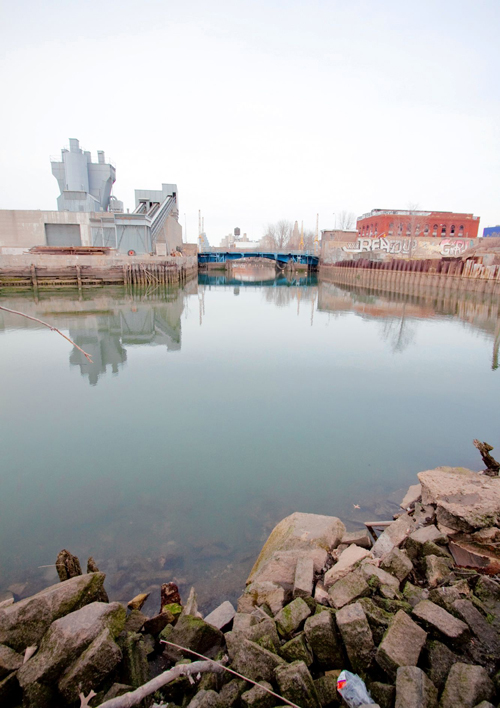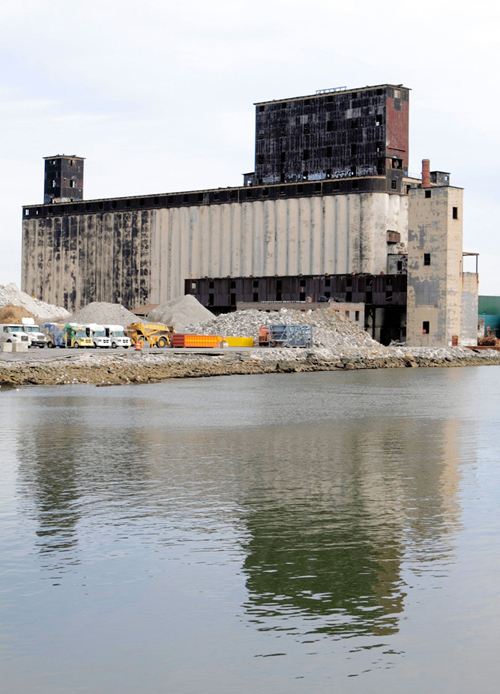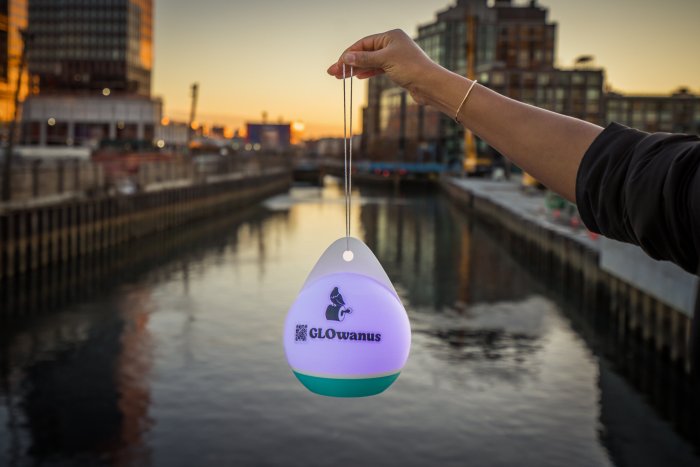The toxic sludge that makes the Gowanus Canal an environmental nightmare would be the foundation for a new park just blocks from the fetid waterway, under a federal proposal.
The Environmental Protection Agency is considering burying some of the sludge dredged from the canal during the Superfund cleanup in new landfills at the Fourth Street Basin in Gowanus and the Columbia Street Grain Elevator in Red Hook — two sites just a stone’s throw away from the foul-smelling inlet — then topping the muck with soil to create permanent man-made open space.
The EPA has built similar so-called confined disposal facilities to store treated waste at other toxic sites, including one at the Waukegan Harbor off Lake Michigan in Illinois that was converted into a grassy park space as part of a government cleanup funded by polluters, said the EPA’s Gowanus Canal Superfund project manager Christos Tsiamis.
Workers would retrieve filthy sediment from the least contaminated sections of the canal that don’t contain coal tar, treat the gunk to remove harmful pollutants, and place the sludge in sealed containers roughly eight to 15 feet underground, Tsiamis said.
These steps will ensure sediment scraped from the bottom of the canal, which contains cancer-causing chemicals, will not pose health risks, feds claim.
“[By then] it’s not toxic to the touch,” Tsiamis said. “It’s not a dump for toxic materials.”
The EPA is also studying six other ways to get rid of the contaminated sludge at the bottom of the canal, which is loaded with heavy metals, chemicals and coal tar from manufactured gas plants that operated on the banks of the Gowanus for more than a century.
Cleaning up the gunk is just one part of the proposed $500 million Superfund cleanup — and turning the sludge into Brooklyn landfill is likely cheaper than transporting it to an out-of-state treatment plant or dump, Tsiamis said.
Compassionate conservationists in Gowanus said they could live with the sludge parks — if the waste is disposed of properly.
“There’s a social injustice in putting our waste in another community,” said Andy Simon, the president of the Gowanus Canal Conservancy. “We’re not opposed to [storing it locally] if the EPA can store it safely.”
Marlene Donnelly, a member of Friends and Residents of Greater Gowanus, says the putrid sediment shouldn’t stray far from its home.
“[The sludge] is already in our backyard,” said Donnelly. “It’s the pollution that made Brooklyn. We should live with the result.
“To take our waste and dump it in someone else’s backyard is not a good thing.”
The defunct silo complex at the foot of Columbia Street was proposed as a possible storage location by members of the community advisory group monitoring the Superfund cleanup, Tsiamis said.
But the site is privately owned, potentially complicating its transition to a public park.
The Army Corps of Engineers first proposed using the Fourth Street Basin as a storage facility for contaminated waste in a study on ways to restore the Gowanus that was shelved when the EPA took control of cleaning the waterway in 2009.
The basin, which forms a spur off the canal at Fourth Street, collects stormwater runoff and abuts the proposed Whole Foods site at Third Street and Third Avenue.
A Whole Foods spokesman did not return calls seeking comment.
The EPA is set to announce a final cleanup plan for the canal later this year, four years before its Superfund cleanup is scheduled to begin.





















